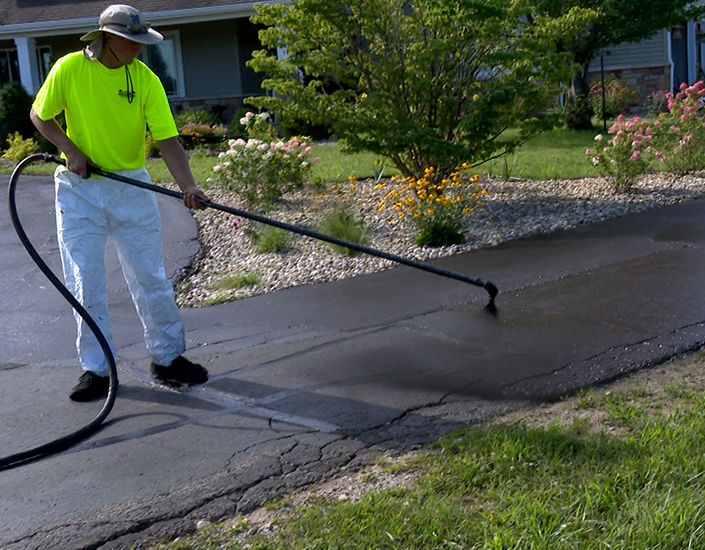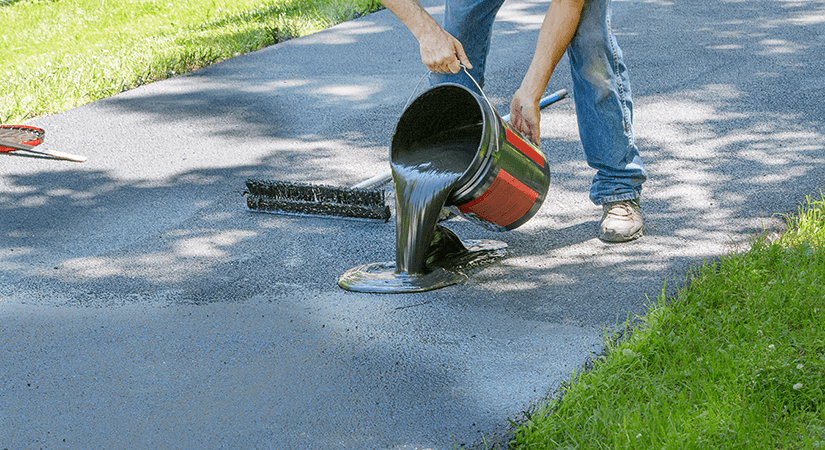Hot Mix Asphalt: A Lasting Solution for Sidewalk
Hot Mix Asphalt (HMA) has arised as a leading sustainable choice for pavement options, offering a myriad of ingenious innovations and environmental advantages. Its capability to reuse products and reduce energy usage provides an engaging situation for its adoption in road building and construction tasks. Moreover, the long-term efficiency and sturdiness of HMA make it a favored option for facilities development. As the need for eco-friendly building and construction methods grows, exploring the nuances of HMA's sustainability can supply important understandings into the future of pavement options.
Ecological Advantages of Warm Mix Asphalt

Furthermore, Hot Mix Asphalt aids to mitigate metropolitan heat island impacts. Its dark shade absorbs sunlight, lowering the amount of warm showed back into the atmosphere compared to lighter-colored sidewalks. This can decrease ambient temperatures in metropolitan areas, lowering the demand for a/c and inevitably decreasing power intake.
Furthermore, Hot Mix Asphalt adds to boosted stormwater management. Its porous nature enables water to reenergize and penetrate the pavement groundwater supplies, lowering drainage and the risk of flooding. These ecological advantages make Hot Mix Asphalt a sustainable option for paving highways and roads.
Power Effectiveness in HMA Manufacturing
Is power effectiveness a crucial aspect in the production of Warm Mix Asphalt (HMA)? Energy plays a considerable role in the production of HMA, influencing both expense and ecological sustainability. One essential element of power effectiveness in HMA manufacturing is the usage of warm mix asphalt (WMA) technologies.
Furthermore, advancements in plant innovations have actually led to more energy-efficient HMA production procedures. By enhancing power usage in HMA manufacturing, the sector can minimize its carbon impact while keeping top notch sidewalk materials.
Recyclability of Hot Mix Asphalt
The recyclability of Warm Mix Asphalt (HMA) is a critical facet of its sustainability and lasting environmental effect. HMA is among one of the most recycled materials in the United States, with over 100 million lots of redeemed asphalt pavement (RAP) being reused yearly in new sidewalk construction. Recycling HMA provides a number of ecological advantages, such as decreasing the demand for virgin products, reducing power usage during manufacturing, and lowering the quantity of waste sent out to blog land fills.
The process of reusing HMA includes grating the existing pavement, squashing it into smaller items, and mixing it with new accumulation and asphalt binder to produce a recycled mix. Overall, the recyclability of HMA plays a significant duty in promoting sustainable techniques within the pavement industry.

Long-Term Efficiency of HMA
Asphalt pavements demonstrate durability and durability over an extended period, mirroring the long-term efficiency of Warm Mix Asphalt (HMA) Furthermore, innovations in HMA technology, such as the usage of polymer-modified binders and cozy mix asphalt, have better enhanced the toughness and longevity of HMA pavements. By focusing on top quality building and upkeep techniques, HMA continues to show itself as a lasting and cost-efficient service for durable sidewalk infrastructure.

HMA: Durability and Sustainability
Showing both sturdiness and sustainability, Warm Mix Asphalt (HMA) has come to be a cornerstone in the building and construction of lasting sidewalk facilities - commercial parking lot paving. HMA's toughness stems from its capacity to withstand hefty loads, extreme weather, and high website traffic quantities, making it a reliable selection for roadways, highways, and airport terminal runways. The make-up of HMA, which typically includes accumulations, binder, and filler, plays a critical role in boosting its durability and resistance to tear and use
Additionally, HMA's sustainability lies in its recyclability and energy-efficient manufacturing procedure. The capacity to reuse recovered asphalt sidewalk (RAP) in new HMA combinations lowers the demand for virgin materials and reduces the environmental influence of sidewalk building and construction and upkeep. Furthermore, the energy effectiveness of creating HMA lies in its reduced mixing temperatures contrasted to other pavement materials, resulting in reduced energy intake and greenhouse gas exhausts.
Verdict
Finally, hot mix asphalt (HMA) offers a lasting option for sidewalk with its eco-friendly attributes. HMA's recyclability, energy efficiency in manufacturing, and long-lasting toughness make it a green selection for roadway building. By preserving natural resources, decreasing waste, and decreasing greenhouse gas emissions, HMA plays a vital role in advertising sustainability in facilities growth. Its capability to mitigate urban warm island results better emphasizes its value in producing eco mindful and durable pavement systems.
HMA is one of the most recycled materials in the United States, with over 100 million bunches of recovered asphalt sidewalk (RAP) being reused annually in more brand-new pavement building and construction.The process of reusing HMA involves milling the existing pavement, squashing it right into smaller sized pieces, and blending it with brand-new aggregate and asphalt binder to produce a recycled mix.Asphalt pavements demonstrate sturdiness and strength over an extended duration, mirroring the long-term performance of Hot Mix Asphalt (HMA) Additionally, improvements in HMA technology, such as the usage of polymer-modified binders and cozy visit site mix asphalt, have better enhanced the toughness and long life of HMA pavements. The capability to recycle redeemed asphalt pavement (RAP) in brand-new HMA blends reduces the demand for virgin products and lessens the ecological effect of pavement building and construction and upkeep.